History of some inventions
Or why the inventor of the incandescent lamp is Thomas Edison, not Alexander Lodygin, who patented the lamp with the filaments of refractory metals?
But if Lodygin and Popov are remembered in the world, then some people, whose contribution to military affairs, no doubt, was outstanding, are hardly remembered. I would like to tell about such people and inventions.
Dynamite.
The Nobel family lived in St. Petersburg for more than 20 years, the childhood and youth of the Nobel brothers: Robert (1829-1896), Ludwig (1831-1888) and Alfred (1833-1896) passed here, their scientific and business interests were born and formed here. Strictly speaking, Russia became the second homeland for Robert and Ludwig, whose activities are associated with the development of many branches of Russian industry. As for the younger of the Nobel brothers, Emil (1843-1864), he was born at all in the capital of Russia.
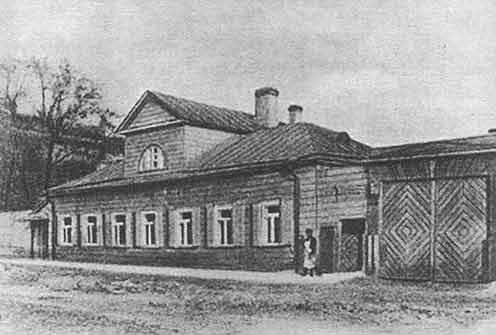
Fate brought the Nobel family, and in particular Alfred, with the founder of Russian organic chemistry, Nikolai Nikolayevich Zinin.
Zinin became the teacher of the Nobel brothers, because in Russia at that time the children of foreigners were not allowed to study with the Russians, and the only way out was to hire home teachers.
And with the teacher, the Nobel brothers were extremely lucky, because it was Zinin who developed the most progressive method for the synthesis of nitroglycerin from glycerol using concentrated nitric acid, low temperature, etc.
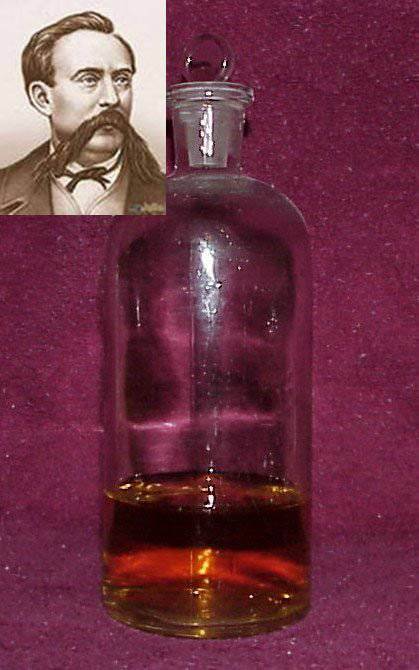
He, together with a young engineer-gunner V.F. Petrushevsky solved the problem of using the strongest explosive nitroglycerin for military purposes, a very topical problem at that time. Exploring various nitro-derivatives, Zinin, together with VF Petrushevsky, began work on the creation of an explosive composition based on nitroglycerin, safe during transportation. As a result, a good option was found - the impregnation of magnesium carbonate with nitroglycerin.
Alfred Nobel also joined this work, and it is not surprising that you can be sure that this was agreed with the teacher and father who sent him for an internship to Italian Ascanio Sobrero, the discoverer of nitroglycerin.
And in 1859, the Nobel Father went bankrupt and returned with his wife and younger son Emil in search of a new life to Stockholm, his three older sons remained in St. Petersburg.
And Alfred 1859 / 60 in the winter carries out various experiments with nitroglycerin. He learned how to get it in acceptable quantities for testing. He mixed nitroglycerin with black powder, as Zinin had already done with engineer Petrushevsky in 1854 (in fact, they had created one of the first ways of passification of nitroglycerin), and set fire to the mixture. Experiments on the ice of the frozen Neva proved successful, and satisfied with the results Alfred went to Stockholm.
In 1862 in Helenborg, near Stockholm, the Nobels began to make nitroglycerin handicraft, which ended on September 3 on 1864 with an explosion of monstrous power that killed eight people, among them Alfred's younger brother Emil. Two weeks later, Emmanuel broke paralysis, and until his death in 1872, he was bedridden. The case is now headed by Alfred.
In 1863, he invented the nitric acid-glycerin blender injector (which, by the way, is his greatest invention), which solved the problem. It was possible to start industrial production and the creation of a network of factories in various countries.
As a result of searching for nitroglycerin-based blends that are easy-to-use, Alfred patented a safe combination of nitroglycerin with kieselgur (loose siliceous sedimentary rock from shells of diatoms), calling it dynamite.
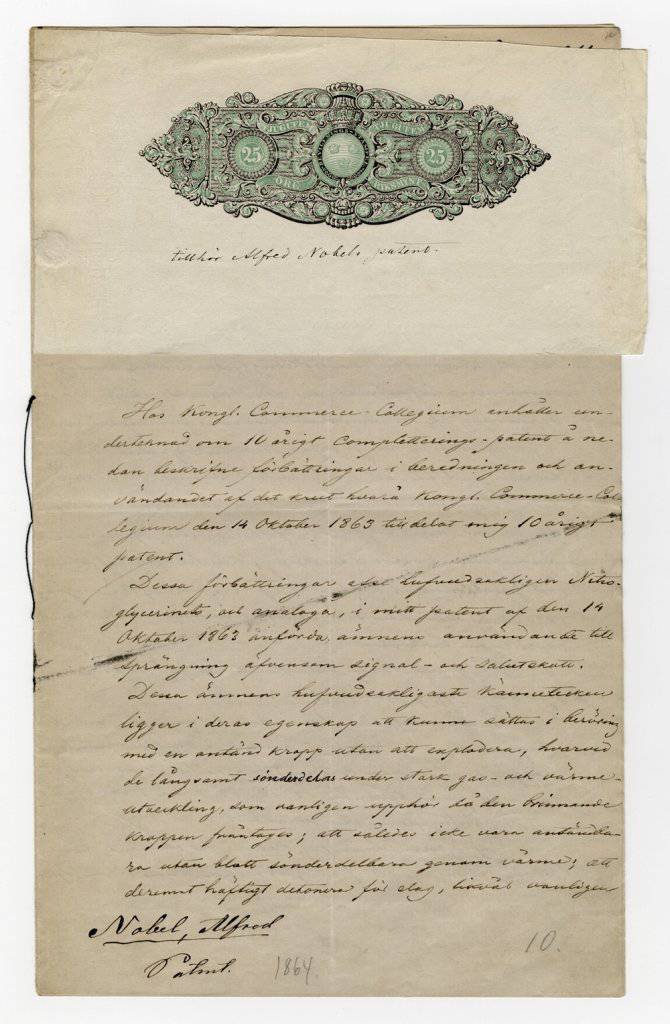
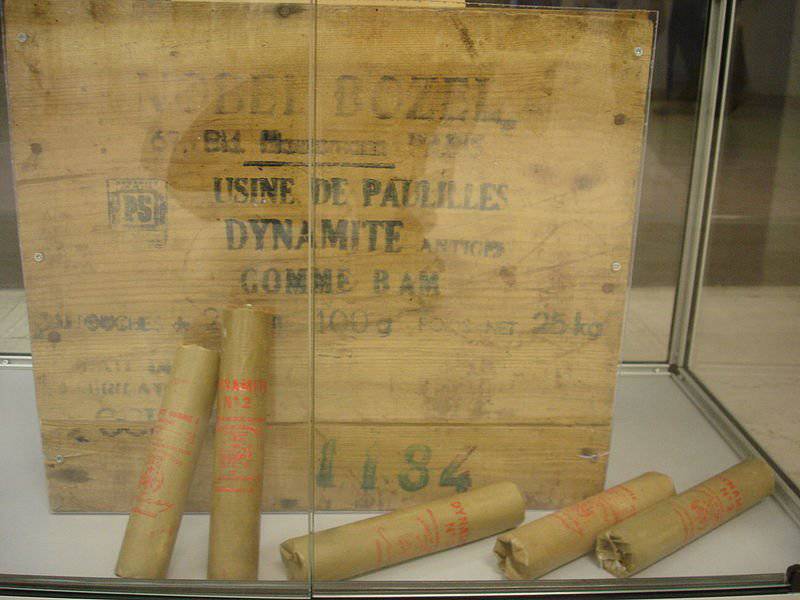
Of course, in this case, the legal aspect of the matter should immediately be formalized. Back in 1863, Mr. A. Nobel patented the use of nitroglycerin in technology, which was not ethical (remember Zinin!). In May, 1867 g. He patented dynamite (or safe Nobel explosive powder) in England, and then in Sweden, Russia, Germany and other countries.
In Russia, 1866 was exploded at the nitroglycerin plant in Peterhof, and further work with nitroglycerin is banned.
Sobrero described nitroglycerin in 1847. Zinin proposed to use it for technical purposes in 1853. Engineer Petrushevsky first began to produce it in large quantities in 1862 (produced over 3 t), and under his leadership nitroglycerin was first used in the development of gold-bearing alluvial deposits in Eastern Siberia in 1867. These are the facts. Among them is the invention of Alfred Nobel dynamite in 1867. Here, it is appropriate to quote the words of such authority as Mendeleev: nitroglycerin "for explosive work was used for the first time by the famous chemist N. N. Zinin during the Crimean War, and then V. F Petrushevsky in 60-ies - earlier invention and widespread use of Nobel dynamite and other nitroglycerin preparations. "
And now few people remember Zinin when he talks about the invention of dynamite. Yes, and the question arises whether Alfred Nobel, who grew up in Russia, was such a Swede?
In August, 1893 Alfred Nobel, as stated in the Highest Command, "interested in physiology and wanting to contribute to research in the field of this science (the influence of urine urine on certain diseases and blood transfusions from one animal to another) donated to the Imperial Institute of Experimental Medicine 10 thousand rubles. “without setting any conditions for the use of the gift brought by him.” The funds went “for the general needs of the institute” - an extension was added to the existing building, where Pavlov's physiological laboratory was located. 1904 Pavlov was awarded the first Nobel Prize in Physiology.
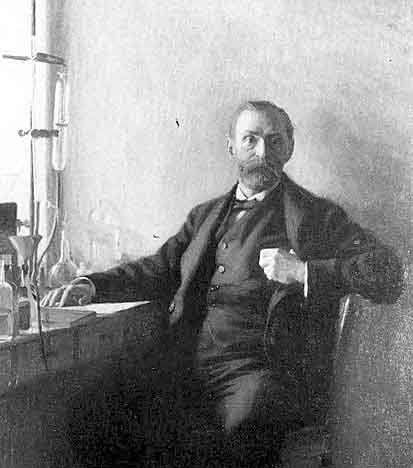
Mortar
17 June 1904 of the year 3-I Japanese army stepped up to the Russian fortress of Port Arthur. The assault began on August 6 and lasted a week. After suffering heavy losses, the enemy went on the defensive. Preparing the next attack, the Japanese were intensive engineering work. Defenders of the fortress also strengthened their positions.
Here on the mine barrier "Yenisei" serves as a junior miner midshipman Sergei Nikolaevich Vlasyev. With a company of naval assault Vlasyev hit the fort number 2. Here, some Russian and Japanese trenches divided the distance in 30 steps. In these conditions required weapon melee, since conventional weapons were powerless. The distance to the enemy was so small that when shooting there was a risk of hitting his troops too. Only occasionally the fortress artillerymen succeeded in flank attacks on enemy positions.
Then lieutenant fleet N.L. Podgursky offered to shoot at the besiegers from torpedo tubes installed in trenches with a certain angle of inclination to the horizon, throwing pyroxylin high-explosive bombs out of them with compressed air. Almost simultaneously, midshipman S.N. Vlasyev advised using the same 47-mm ship’s cannon, mounted on a three-inch field carriage, to give the barrel large elevation angles, and loading it through the barrel with home-made pole mines. Major General R.I., Head of the Land Defense of Port Arthur Kondratenko approved the idea and commissioned the creation of a “mortar mortar” to the head of artillery workshops, Captain Leonid Nikolayevich Gobyato.
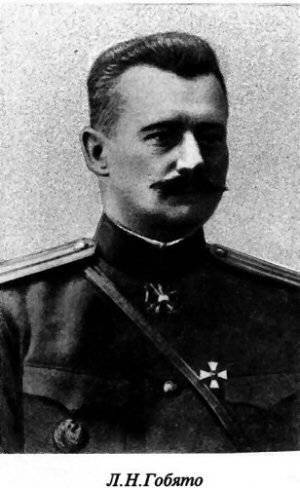
Assessing the projects of Vlasyev and Podgursky, Gobyato proposed a number of important improvements.
The creation of a “mine mortar,” as the co-authors called their invention, began during the July battles. "Mine Mortar" was created on the basis of ammunition, called "throwing mine" and was in service with a number of battleships and cruisers of the Port Arthur squadron.
Throwing mine was a cylindrical projectile with tail. It had a caliber of 225 mm, a length of 2,35 m and a weight of 75 kg (including 31 kg of explosives). This mine was fired from a tubular apparatus using a powder charge and hit a target at a distance of up to 200 meters.
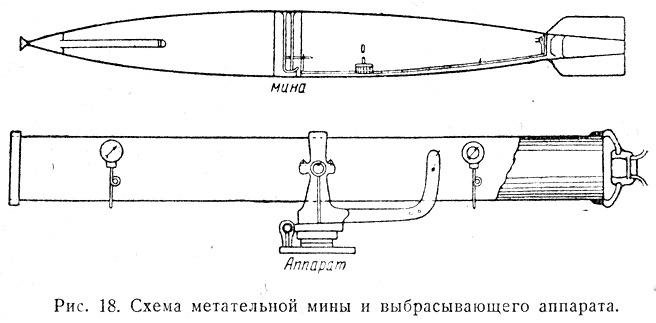
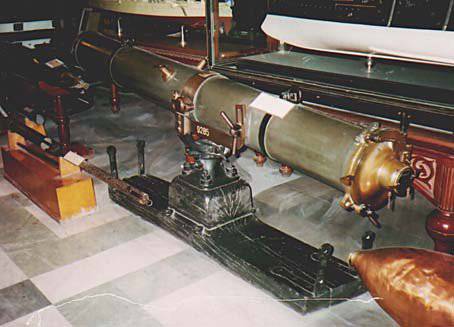
The progress of naval combat technology (above all, the improvement of torpedo weapons) made the throwing mine by the beginning of the 20th century archaism. However, the port-arthur experimenters this weapon prompted a valuable idea. After all, they had at their disposal a smooth-bore propelling apparatus, which fired a feathered projectile, having a hinged trajectory and great destructive force. In addition, it was light and, therefore, allowed quick transportation to the place of use. To transform it into (so the experimenters called their creation) required a device that perceives the recoil energy at the moment of the shot, as well as a pointing and aiming device. Their creation was possible for the artillery workshops of Port Arthur.
A limited number of mine vehicles on the squadron and their ammunition, as well as a small firing range contributed to this (6 mine mortars were installed on the land front of the fortress, according to other sources - 7).
It is necessary to dwell on one more version of the “Port-Arthur mortar”, more precisely, on a new type of ammunition for mounted fire - the “above-caliber featurine mine type” proposed by Vlasyev.
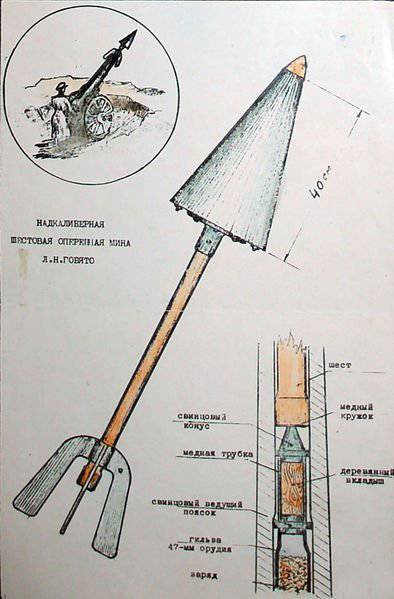
The essence of its design and method of use can be defined as follows: the cone-shaped warhead was connected to the bottom with a rod equipped with a stabilizer. This rod was inserted into the barrel of the 47-mm naval gun (from the barrel), and from the breech the gun was loaded with a loaded sleeve (without a shell). Mina total weight 11,5 kg was shot at a distance from 50 to 400 meters.
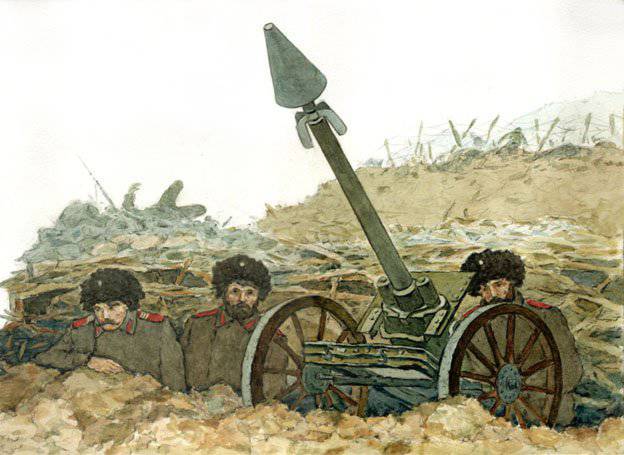
As you can see, the Russian defenders of Port Arthur created two types of guns, firing firing shells on a hinged trajectory. Subsequently, they were used as bombers and mortars.
The results of their application were on the face. Of every four mines released, three fell into the trenches. Flying high up, the mine turned upside down and fell almost vertically on the target, destroying trenches and destroying the enemy. The explosions were so strong that the enemy soldiers in a panic left their places in the trenches.
By the way, the defenders of the fortress used another new weapon - sea anchor mines in the land version. They were placed on 100 kg of pyroxylin, 25 kg of shrapnel bullets, inserted piece of fuse cord, designed for burning within a few seconds. They were used mainly from positions located on higher ground. Mines dragged up the specially constructed 20-meter plank flooring, set fire to the cord and pushed them against the Japanese. That's just for flat terrain this means of destruction of the infantry.
Having assessed the situation, General Legs decided to stop the attacks on the broad (Eastern) front and concentrate all his forces to capture High Mountain, from which, as he became aware, the entire port-arthur harbor was viewed. After fierce battles lasting ten days 22 November 1904 of the year. High has been taken. The works of Vlasyev with Gabyato fell into the hands of the Japanese, thanks to which his device soon became the property of the British press. Unfortunately, the work of the defenders of Port Arthur by Russian generals was rated as “toy guns”, but it was appreciated in Germany and England.
Flamethrower
The creator of the knapsack fire appliance is Lieutenant-General Sieger-Korn (1893). In 1898, the inventor proposed a new original weapon to the Minister of War. The flamethrower was created according to the same principles as modern flamethrowers operate.
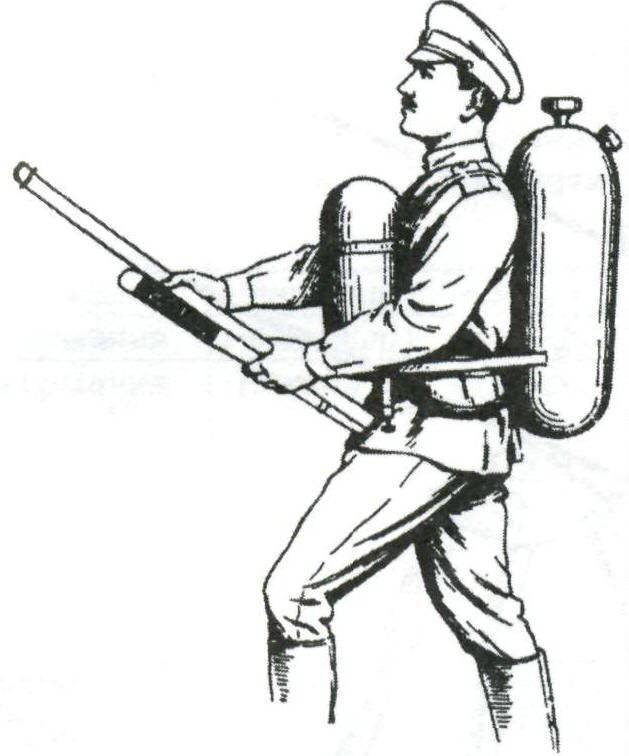
The device was very complex and dangerous to use and was not accepted for service under the pretext of “unreality”, although the inventor demonstrated his offspring in action. The exact description of its construction has not been preserved. Nevertheless, the countdown to create a "flamethrower" can start with 1893 g.
Three years later, the German inventor Richard Fiedler created a flamethrower of a similar design.
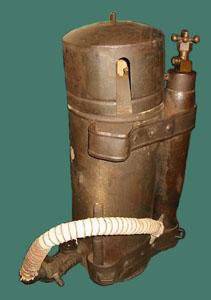
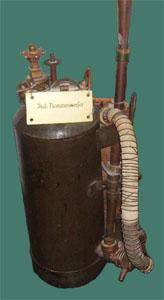
Fidler turned to Russia with a request for testing his developments, such was carried out at the site in Ust-Izhora.
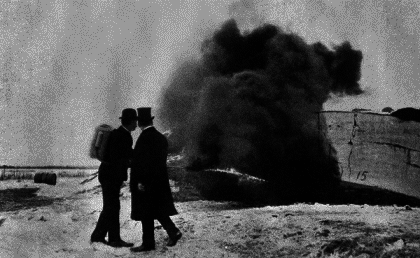
It was shown 3 type flamethrowers: small (worn 1 soldier on the back), medium (worn 4 fighters), heavy (transportable).
After testing 1909g. The Russian military did not begin to purchase new weapons. In particular, a small flamethrower was considered unsafe for its own, and medium and heavy were considered unsuitable because of the large mass and the need to have a lot of reserves of combustible substances. Charging and installation were considered quite long, which is fraught with risk for combat teams and actual flamethrowers.
After a year and a half, Fidler again turned to Russia, now with advanced weapons, but again did not have success. In other European countries, which he traveled even before Russia, the invention was also not adopted. However, the events of 1915, when the Germans used flame-throwing forces against the countries of the Entente, made the government of the opponents of Germany in the First World War.
At the beginning of 1915, design work began on the creation of flamethrowers in Russia. In September of the same year, military flame-throwers, developed by Professor Gorbov, entered the military tests. But the flamethrower was very cumbersome and heavy, which did not fit into the category of portable weapons. This flamethrower has been rejected.
In 1916, the commission of the military ministry of Russia was presented with a knapsack flamethrower, designed by the designer Tovarnitsky. After successful tests, the Tovarnitsky flamethrower was put into service in the 1916 year, and at the beginning of 1917, the infantry regiments of the Russian army had flamethrowing teams.
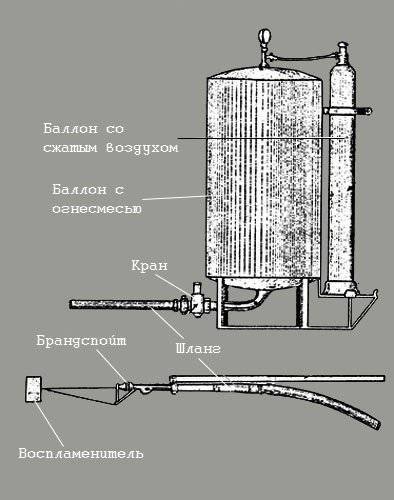
Structurally, the Tarnitzkyi’s backpack flamethrower consisted of three main parts: a cylinder with fire mixture, a cylinder with compressed air and a fire engine with an igniter. The principle of operation of the Tovarnitsky flamethrower consisted of the following: compressed air from a special cylinder got into the cylinder with fire mixture through a special gearbox. Under the influence of pressure of compressed air, the fire mixture was pushed into the hose, where it ignited. The simplicity of the design allowed, until the middle of the year 1917, to release about 10 thousands of Tarnitzky knapsack flame throwers.
Knapsack parachute
September 8, 1910 on the Commandant Field in St. Petersburg held the first aviation competition of Russian pilots. The holiday was already ending when Captain Matsievich’s airplane at an altitude of 400 m suddenly began to collapse. The pilot fell out of the car and fell to the ground with a stone. This terrible event shocked G.E. Kotelnikov, who was present at the same time, that he decided at all costs to come up with an apparatus that would save the life of pilots in such situations.
Pilots escaped to Kotelnikov with the help of long folded “umbrellas” fixed on the plane. The design was very unreliable, besides it greatly increased the weight of the aircraft. Therefore, it is used very rarely.
At home, in the theater, on Kotelnikov street, he was thinking over an aviation parachute. He came to the conclusion that during the flight the parachute should be on the aviator, work flawlessly, be simple in design, compact and light, its dome is best made of silk.
The inventor decided to arrange a parachute on the principle of "the devil in the box." Made a model in the form of a doll with a tin cylinder of a cylindrical shape, which was closed with a lid with a latch. Inside the helmet on a compressed spring lay a dome and lines. It was enough to pull the cord connected to the latch, the cover was folded back, and the spring pushed the dome out. “We lived in a country house in Strelna,” the inventor’s son Anatoly Glebovich recalled about the first tests of a parachute model (he was 1910 years old in 11). - It was a very cold October day. My father climbed onto the roof of a two-story house and threw a doll from there. The parachute worked perfectly. My father joyfully escaped only one word: "Here!" He found what he was looking for! ”
The model was, of course, a toy. When the calculation of a real parachute was made, it turned out that the required amount of silk in the helmet does not fit. And then it was decided to put the parachute in the knapsack. The model was tested in Nizhny Novgorod, the doll was dropped from a kite. Returning to St. Petersburg, Kotelnikov wrote a memorandum to the Minister of War General VAKuhomlinov: “Your Excellency! A long and mournful list of glorious victims of aviation prompted me to invent a very simple useful device to prevent the death of aviators in cases of accidents with airplanes in the air. ”
Kotelnikov asked the Minister for subsidies for making a parachute and conducting tests. He himself took his letter to the war ministry. The minister was absent, and Kotelnikov was received by Comrade Minister General A. A. Polivanov. He read the note, examined the model. The inventor threw a doll to the ceiling, and she gently sank to the floor. The demonstration had a decisive effect on Polivanov. The resolution appeared on the memo: “Main engineering management. Please accept and listen. ”
The meeting, at which the parachute was examined, was remembered by Kotelnikov all his life. The chair was chaired by the Chief of the Aeronautical School, Major General AMKovanko (graduate of the Academy of General Staff!). Gleb Evgenyevich clearly and clearly reported the essence of the matter.
“Everything is fine, but here is a thing ... What will happen to your aviator when the parachute opens?” - asked Kovanko.
- What do you have in mind? - did not understand the question Kotelnikov.
“And the fact that he will no longer need to save himself, since his legs will come off from a strike when the parachute opens.”
Kotelnikov had objections against this brave gentlemen's “iron” argument, but the academic commission suffered: “To encourage the speaker, but to reject the invention because of the obvious illiteracy of the author.”
Kotelnikov recalled: “It was as if a tub of mud was poured over me. Hands down ... ".
Kotelnikov made a second attempt to register his invention already in France, having received the 20 March 1912 of the year patent for the number 438 612.
And in the evening of June 6 1912 a kite balloon rose from the camp of the aeronautical park in the village of Saluzi near Gatchina. A mannequin in full flight form was attached to the side of his basket. Sounded the team "Stop at the winch!".
2000 height m. Three times the signal horn. The mannequin flew down. After a couple of seconds, a snow-white dome opened above it. The success of the tests was obvious. But the military did not hurry. Several more tests were conducted. The famous pilot Mikhail Efimov threw the dummy from his "Farman" - everything turned out. At Gatchina airfield tests conducted by Lieutenant Gorshkov. He dropped the dummy from the Blerio aircraft at a height of about one hundred meters. Parachute worked brilliantly.
But the Main Engineering Directorate of the Russian Army did not take it into production because of fears of the head of the Russian air force, Grand Duke Alexander Mikhailovich, that at the slightest malfunction the aviators would leave the airplane.
Thus, a fundamentally new parachute of the PK-1 type was invented. Kotelnikov's parachute was compact.
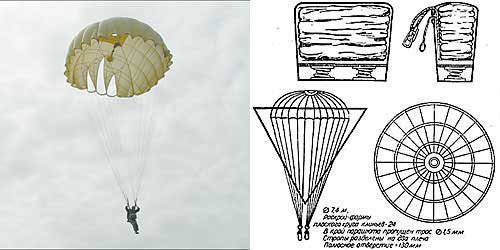
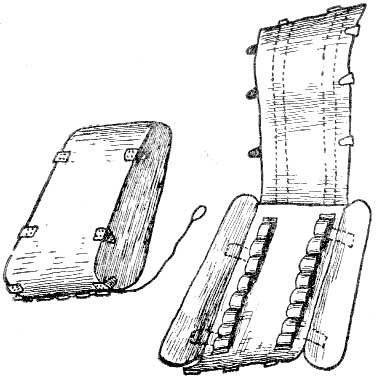
Its dome was made of silk, the lines were divided into 2 groups and attached to the shoulder girths of the harness. The dome and lines were laid in a wooden, and later aluminum backpack. At the bottom of the knapsack under the dome springs were located, which threw the dome into the stream, after the jumper pulled out the hood. Subsequently, the rigid satchel was replaced with a soft one, and honeycombs appeared at its bottom for placing a sling in them. This design of the rescue parachute is still used. For what Kotelnikov think, all “non-monks”, pilots and other flyers will be eternally grateful.
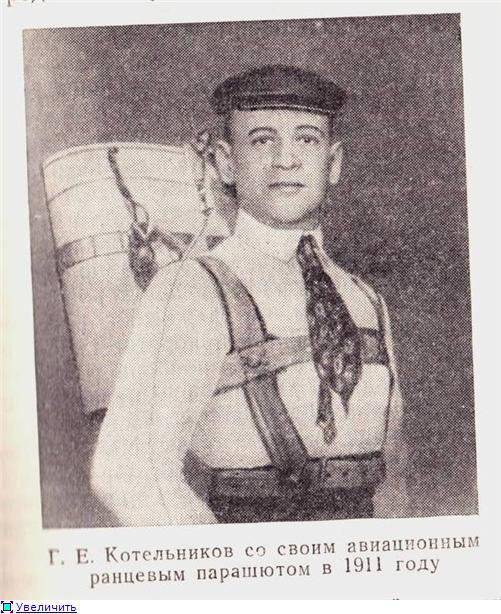
In general, some officials of all stripes treated the inventors inhospitable, and the exit for them was “abroad”. The one who could patent there the ideas, also remember that. About the rest they say, "Well, yes, of course ... Russia is the birthplace of elephants." Paradoxically, for example, with all the unusual, ambitious, complex and enormous size, the tsar-tank Lebedenko got his chance to live, because he was interested in Nicholas II.
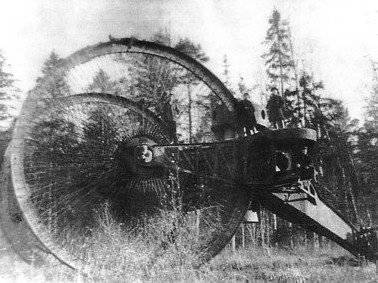
http://vivovoco.rsl.ru/VV/JOURNAL/VRAN/01_12/NOBEL.HTM
http://warfiles.ru/show-14090-pervyy-v-mire-minomet.html
http://www.100velikih.ru/view1196.html
http://vadimvswar.narod.ru/ALL_OUT/TiVOut0204/Flamm/Flamm035.htm
http://crypto.hut2.ru/ognemet2.php
http://www.topguns.ru/ognemety-2ww/?n=8
http://zateevo.ru/?section=page&action=edit&alias=kotelnikov_ge
http://militera.lib.ru/science/strokov_aa/ill.html
Information